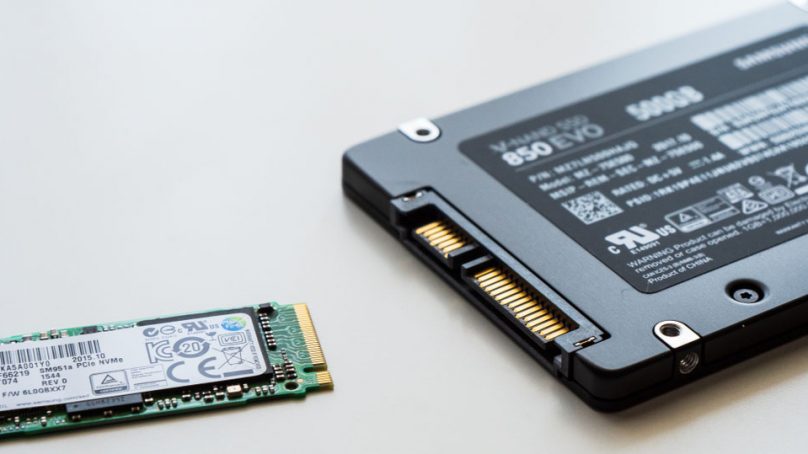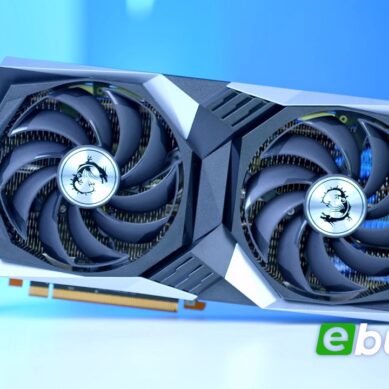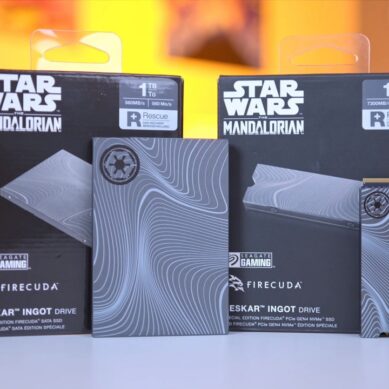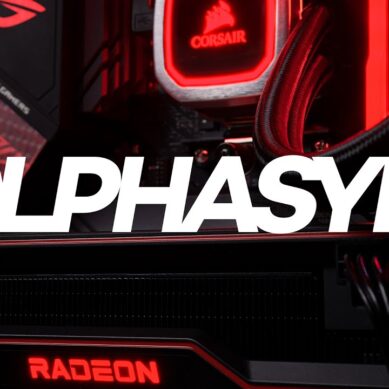
Samsung 850 Evo SSD vs Pro Comparison
Samsung’s popular solid-state drives aren’t quite as confusingly named as some of the other lines of components we could mention, but you could be forgiven for confusing one with another. If you’re looking to make a quick decision before installing your storage, here’s an explanation.
A case in point is the distinction between the 850 PRO and the 850 EVO. At first glance, the two have the same capacity and the same read and write speeds. So, where do the differences come in, and why is the EVO so much more popular than its brother?
What’s the same?
First, let’s talk about the similarities between the two drives. They’re both made in the same shape – a black 2.5” drive with SATA data and power connectors. The only external differences between them is that one has a red square on the front (that’s the PRO) and the other does not. You’ll also find similarities internally: they both incorporate the same MHX controller, along with a little cache memory in DDR2. Samsung built both drives so that there’s around 1MB of cache for every 1GB of storage space.
What are the differences?
There are measurable performance differences between these two drives. But to understand the root of them, we should first look at what’s going on inside the drive itself.
SLC vs MLC vs TLC
While researching solid-state technology, you might have encountered the terms MLC and TLC. These terms represent the fundamentally different ways in which solid-state storage is constituted. But what does it mean? We’re going to get just technical here, so brace yourselves.
Inside every Solid State Drive you’ll find something called NAND flash memory, which is preferred to NOR flash memory in SSDs thanks to its superior performance in write operations. In these drives, it’s V-NAND flash memory, which makes use of a three-dimensional grid of cells, built from stacked planes of NAND cells.
A Single Level Cell (or SLC) is a cell that can be given a charge (or not). Your computer reads these cells by checking for a voltage. If there is, it’s a one; if there isn’t, it’s a zero. In this way, it can represent one bit (that’s binary digit) that can be a zero or a one. By stringing together these cells into long chains, we can form complex strings of zeros and ones. This is binary data, and it’s the basis of modern computing.
This variety of flash is simple, reliable, and not vulnerable to fluctuations in temperature. It’s also very expensive relative to some of the other architectures we’re going to discuss. A Multi-Level Cell (or MLC) crams two bits into a single unit. This allows for four possible states (00 or 01 or 10 or 11) rather than just two (0 or 1). This dramatically reduces manufacturing cost per byte stored, at the expense of durability. This is the technology that made solid-state storage feasible for people who don’t have thousands and thousands available to spend on storage.
Finally, we have a Triple-Level Cell (or TLC), which squeezes in three bits of data for a total of eight possible states. This is the cheapest variety of flash to manufacture, but it’s also the most limited in terms of read/write operations before failure. And this brings us to the crucial, defining difference between these two drives: the EVO comes with TLC storage and the PRO comes with MLC. This ultimately means that the former is cheaper than the latter to produce, but that it won’t be quite as durable in the long run. As such, it’s less suited to professional settings where write operations are more frequent.
Longevity
The use of MLC over TLC means, as we’ve noted, that the PRO version of the drive is substantially more robust. And this is reflected in a more generous manufacturer’s warranty. It’s worth thinking about just how long you’re going to be using your preferred drive before you start looking for a replacement – if you are going to be swapping five years from now, when you build another entirely new gaming rig, then there might be not much long-term benefit to investing in the more durable drive. After all, who knows how quick SSDs might be five years from now?
Performance
In mixed workloads, the PRO performs slightly better than the EVO. These differences aren’t substantial, however; in many applications you’ll find a negligible difference between the two.
Power consumption
You’ll find differences across the entire range of Samsung drives based on the storage capacity. It’s certain, however, that the PRO drive uses less power when you hold all other considerations constant.
Operating Temperature
One of the other downsides of TLC storage is that it produces more heat (which is a big reason that it’s less durable) as such, you can expect this drive to run hotter when you’re thrashing it under maximum load. However, given that few gamers will ever get near max load, this isn’t much of a concern for most of us. You’ll load a level in a few seconds, and then the drive will remain largely untouched while the actual gaming takes place.
Price
The PRO version of the drive is more expensive to manufacture, and therefore commands a higher cost. With that said, the newer 860 range may offer superior value per GB stored.
Both of these drives are getting a little long in the tooth, and they’ve been largely superseded by Samsung’s 860 range. With that said, they’re still available and worth a look if you’re looking to snap up a bargain. Both drives offer broadly similar performance in most gaming applications, and thus unless you’re looking for the bragging rights that come with a red square, the EVO is probably sufficient for your needs.






